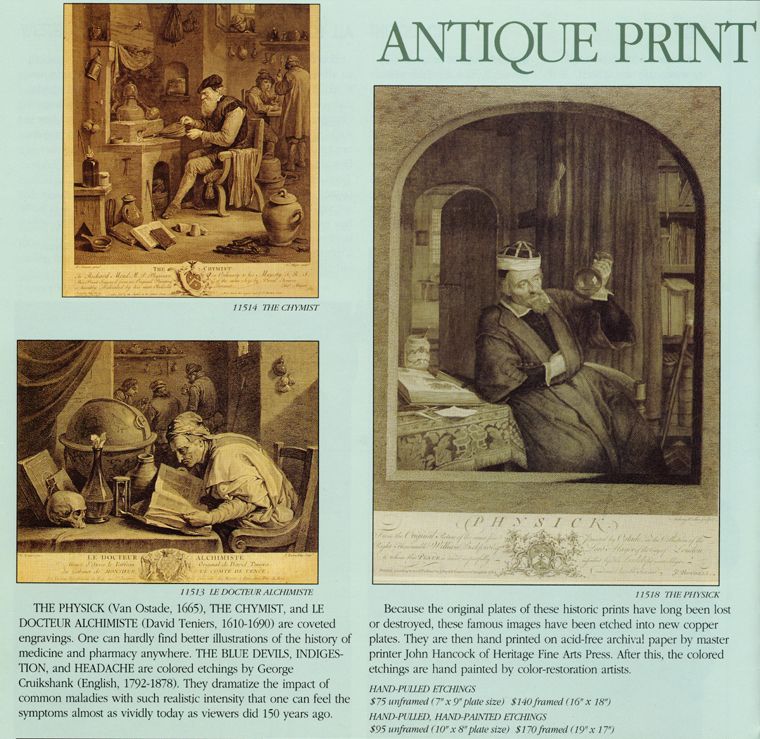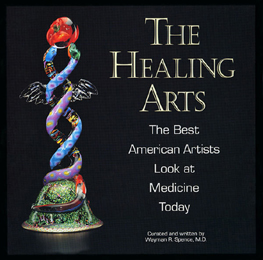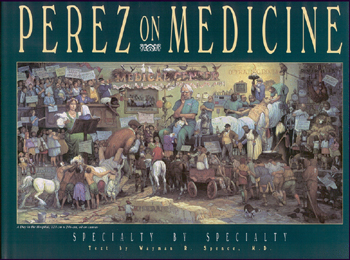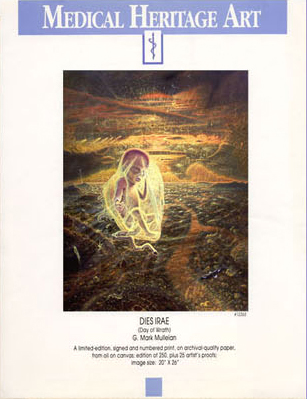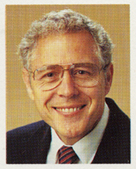Wayman
R. Spence, M.D, a specialist
in physical medicine and rehabilitation had multiple
successful careers; as physician, writer,
art collector, inventor
of sports medicine products, and health educator. Spence became aware
of Mulleian’s paintings
at a feature exhibit at Gallery On The Square
in San Francisco’s North Beach during the early 1980’s. Here he discovered
a startling, powerfully resonating piece entitled Dies Irae by Mulleian,
depicting the aftermath of nuclear annialation. Amazed
and captivated by the painting’s stark, dramatic beauty, it’s
concept and execution, it’s symphony of color and
form, Spence would enthusiastically embark on several visits to the gallery,
each time to study the painting in ever greater detail,
each time discovering more. In a letter to Mulleian, Wayman R. Spence writes,
I think this piece is marvelous in many ways and
has a message, which needs to be delivered.
Upon
request by Spence,
the gallery owner would arrange a meeting with Mulleian and, in a closed-door
session, would buy the right to reproduce and
publish the painting. Within that year Spence would purchase the original
peace for the Medical Heritage Gallery, a prestigious collection of contemporary
art. Dies Irae would eventually be published by WRS publishing, along with
another painting by Mulleian, entitled Spring Rain, a work which depicts a
reflection on the implications of the Aids epidemic. Both works were later
featured in a national and international hard cover art book entitled The
Healing Arts: The Best American Artists Look at Medicine Today, curated and
written by Wayman R. Spence, M.D. In colaberation with his assistant Ann Page.
Book design by Kenneth Turbeville. And jacket design
by Joe James, a volume
comprising the works of sixty artists, including a piece by Jose Pevez.
